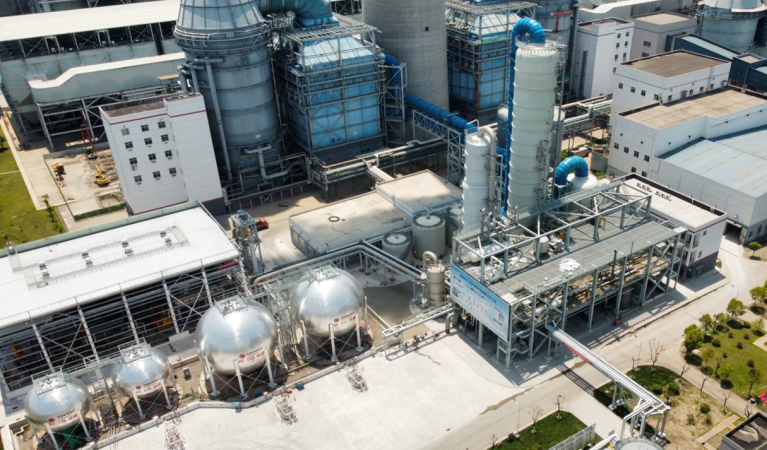Insights and Commentaries
China Continues to Advance CCUS in 2023
'Learning-by-doing’ after launch of first integrated megaton project underscores momentum
20th July 2023
The first half of 2023 saw China’s interest in carbon capture, utilisation and storage progress after China Petroleum & Chemical Corporation, also known as SINOPEC, commenced operations at the country’s first integrated megaton-scale CCUS project in Shandong last August.
Since then, the country’s energy majors and industrial giants have been busy achieving China’s next CCUS milestones in various sectors, including the first offshore CO2 storage project by China National Offshore Oil Company (CNOOC), the first Natural Gas Combined Cycle (NGCC) carbon capture facility by Huaneng, the first commercial-scale CO2 transport pipeline by SINOPEC starting operations and the first oxy-fuel combustion cement carbon capture project by China National Building Material entering development.
Although policy and regulatory frameworks are still largely missing, China’s determination to better understand this technology to meet its carbon neutrality target is evident.
Key milestones in January-July 2023:
- March 23: Technology and entertainment conglomerate Tencent launch the CarbonX program to support China’s CCUS technology development.
- May 19: Construction starts on a 3 mtpa integrated CCUS project in Ningxia region by China Energy Investment Corporation (China Energy), with the first phase to realise 500 ktpa. Part of the captured CO2 from a coal-to-liquids facility will be transported to China National Petroleum ’s oil field for enhanced oil recovery.
- June 1: China Energy’s 500 ktpa coal power CCUS project enters full operation in Jiangsu province, becoming Asia’s largest CCUS project in the power sector.
- June 2: CNOOC begins to inject in China’s first offshore CO2 storage project in the Pearl River Mouth Basin, roughly 190 km southwest of Hong Kong.
- June 28: China United Cement Group, a subsidiary of China National Building Material, inaugurates construction of the world’s largest oxyfuel CCUS project in the cement industry at a scale 200 ktpa in Qingzhou, Shandong.
- July 11: China’s first commercial-scale CO2 transport pipeline with a length of 109 km starts full operations, serving SINOPEC’s Qilu-Shengli CCUS project in Shandong.
- July 12: China’s first carbon capture facility at a NGCC facility commences operation in Hainan Island, developed by Huaneng Group. This pilot plan aims to capture 2,000 tonnes of CO2 per year with Huaneng’s own post-combustion capture technology.
New projects driving down costs
Once China Energy’s Yulin Jinjie 150 ktpa coal-fired power plant carbon capture project came online in June 2021 in Shaanxi province, the company immediately started to plan a 500 ktpa amine-based post-combustion coal power project in Taizhou, Jiangsu province. Learning from the 150 ktpa project, the new facility not only shortened the time of planning, designing and construction, but also greatly improved the amine solvents performance and reduced overall costs.
This 500 ktpa project commenced construction on 22 March 2022, finished construction on 31 December that year, was commissioned in May 2023 and officially became fully operational on 2 June.
Dr. Dong Xu, the project head from China Energy, suggested the overall capture cost has been reduced by 30% and the overall capture energy consumption is now less than 2.4 GJ/tonne CO2. With these improvements, the overall capture cost has reduced to Chinese Yuan 250/tonne CO2 (US$35/tonne CO2).

Figure 1 China Energy’s Taizhou coal-fired power 500 Ktpa carbon capture facility (Source: China Energy)
On the policy side, President Xi Jinping at a meeting of the Central Commission for Deepening Reform on July 11 emphasised that China would gradually transition from dual controls over the maximum volume and intensity of energy consumption to dual control over the maximum volume and intensity of carbon emissions.
This sends a strong signal that China will eventually switch policy focus to carbon emissions and, simply put, that provinces, sectors and factories might eventually face caps on CO2 emissions.
CCUS can be one of the tools that China’s power and hard-to-abate sectors will have to implement to meet the upcoming policy change. All the lessons gained through “project learning by doing” and “technology R&D” will help the country better prepare this new policy regime.
Therefore, it is reasonable to assume that this CCUS momentum will continue in China for the foreseeable future.
This piece was written by Xiaoliang Yang, Country Manager China with the Global CCS Institute.